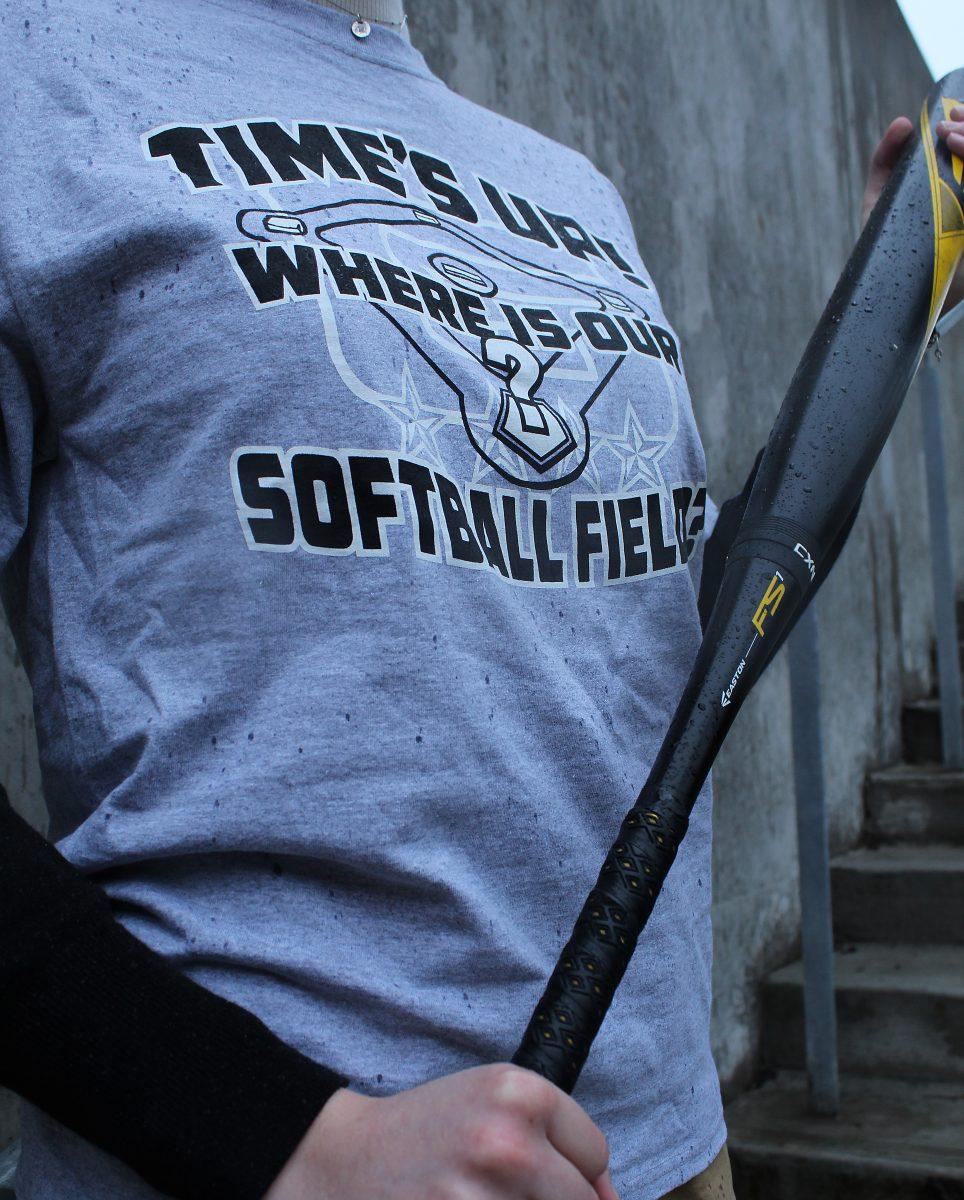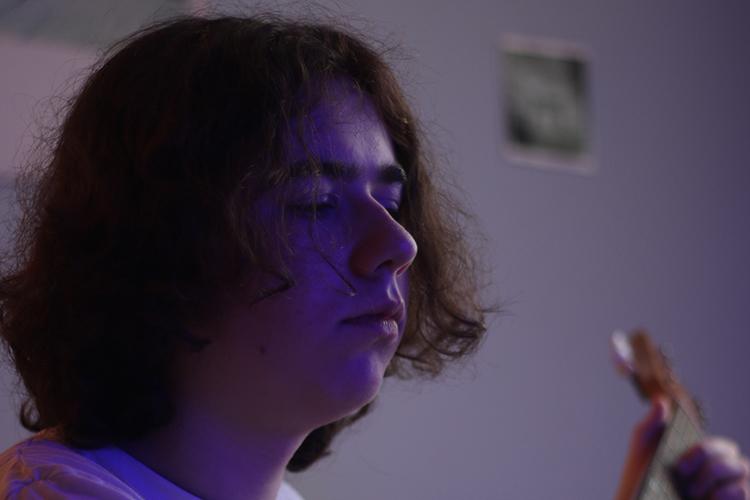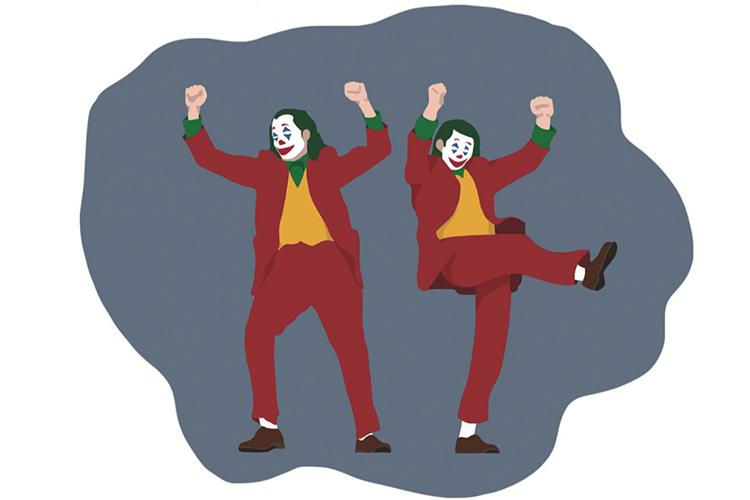
Grant junior Turner Williams was eating lunch in the cafeteria when his toy, which resembled a collapsible metal staff, fell from his pocket and extended into its full form. Upon seeing the toy, a Grant staff member told him to put it away, to which Williams obliged. However, as he stood up at the end of the lunch period, the toy again dropped from his pocket, at which point the staff member demanded to confiscate the toy. Williams says now, “he sees it and says, ‘I want to see this right now; I’m tired of you trying to hurt somebody with this.’ I tried to tell him that I didn’t try to hurt anybody and it just fell out of my pocket. He was like, ‘I don’t believe you, you were trying to take it out and hurt somebody with it.’”
Williams believes the staff member judged him unfairly based on an incident earlier this year. “The reason why he automatically assumed that I was trying to hurt somebody with it is because earlier on, in the beginning of the year, I got into a fight with someone. Instead of looking at the situation, trying to listen to what was happening then, I believe that he brought up past things that had happened to show I was trying to hurt somebody, which wasn’t the case.” Williams tried to explain the situation at the time, but he felt that the staff member did not listen to him and “jumped to conclusions.” Another staff member had to intervene to settle the issue.
Williams thinks the situation could have been handled better if restorative justice practices had been implemented. “I feel like it would’ve really helped a lot of things, actually. It probably would have gotten … to the deeper root of the problem.”
An alternative to zero-tolerance policies, which rely solely on punishment (namely suspensions and expulsions) for discipline, restorative justice is used in both criminal justice and educational systems. It focuses on promoting healing for all parties involved while still holding the transgressor accountable for their actions. “Restorative justice is a way to identify a problem that is occurring between people, and in seeking to restore justice or repair harm, ultimately is finding a way to have a conversation to identify what’s happening and the steps that we can take to make it a better situation,” says Grant history teacher Angela DiPasquale.
Tommi Meyer, a junior at Grant, supports the idea of using restorative justice within schools. “As a discipline system, you need to be addressing the ‘why’ rather than just the ‘what,’ because if you don’t address the ‘why,’ then it’s going to keep happening, and then you get into a cycle, which ends up with a lot of people going straight from high school to prison or other really nasty cycles.”
Portland Public Schools (PPS) has taken steps to implement restorative justice on a district level by increasing the presence of Teachers on Special Assignment (TOSAs) and restorative justice specialists on staff. But its implementation at Grant has been less obvious to some members of the school community. “I would say that it is not existent from my perspective,” says DiPasquale. “I don’t see it with the administration … and I don’t see it occuring within my community of colleagues, and I don’t see it occuring within student groups.”
Some Grant administrators and students alike see the potential benefits of restorative justice for equity within the Grant community.
The first usage of restorative justice practices can be traced back to the First Nations of North America. The International Institute for Restorative Practices says, “the Native peacemaking process involves bringing together victims, offenders and their supporters to get to the bottom of a problem.” Modern restorative justice has adopted many of these core concepts.
In the United States, restorative justice was first introduced to the criminal justice system as an attempt to decrease rampant re-offenses by former convicts. In other countries, this type of restorative justice has been successful. According to the Restorative Justice Council, restorative justice has reduced reoffense in the United Kingdom by 14 percent.
Many schools in the United States have adopted these practices in order to improve equity. Grant history teacher Russell Peterson says, “I think it is a powerful tool in addressing … the racial inequities around the way in which behaviors we want to change can be changed.”
By dealing with discipline measures in a positive and encouraging matter, restorative justice is meant to help students feel supported and build positive relationships. “At its heart, restorative justice is not only about finding positive ways to improve outcomes of any party affected (by an incident) … but finding a way to come together and build positive group rapport with each other so that we don’t get caught up in those issues in the first place,” says DiPasquale.
Grant has taken steps to implement restorative justice through a program called the Multi-Tiered System of Support (MTSS). This department, which encompasses restorative justice and restorative justice specialists, works to implement school policies and practices based on “prevention and problem solving for all students.” These practices use “evidence-based instruction, intervention, and assessment practices,” according to the PPS district website.
MTSS focuses on three tiers of restorative justice in schools—these levels range from “school-wide behavior expectations” and school climate management in the first tier, to identifying students in need of help and giving them support in the second tier, to individual student plans and interventions in the third tier.
Chandra Cooper, the director of the MTSS Department in PPS, says that MTSS and restorative justice also work to keep students in schools rather than using suspensions and expulsions. “We don’t want students to be excluded from school,” says Cooper. “The research is really clear that expulsions, suspensions, (do) not change behavior, and they should not be seen as intervention.”
Cooper, who worked as a principal at Tom McCall Upper Elementary School in the Forest Grove School District, says that some schools in Oregon have seen encouraging results due to MTSS. At her former school, the implementation of MTSS caused a 60 percent decrease in the number of her students in the bottom fifth of standardized test scores. “It wasn’t until I implemented MTSS into my school that I saw actual student outcome for students of color,” says Cooper.
Restorative justice circles are another way in which schools can attempt to use restorative justice to create more discipline equity for students of color. A typical circle involves a facilitator and those affected by the incident sitting down together and discussing the impacts of the action, as well as its motivation and ways to avoid its repetition. The goal of these circles is to encourage students to exhibit more positive behaviors in the future.
DiPasquale used tier three supports while trying to create a positive and supportive classroom environment during her first year at Grant. “The first year I came here, I utilized (restorative justice) as a way to build community so that I could get to know not only the students in my classroom but to get to know Grant,” she says. DiPasquale held regular restorative justice circles during the beginning of her time at Grant. She has since stopped utilizing these circles due to a lack of buy-in from the students. However, she still says that she would like to see restorative justice be used at Grant.
Dana Riemer, the Student Success Program Manager of PPS, believes in the necessity of creating a culture around restorative justice in order to make this system successful. “If you’re doing (restorative justice) with fidelity the way it’s meant to be done, you’re doing circles every day,” says Riemer. “It’s not just when something goes wrong. Because (restorative justice) isn’t a great bandaid. It works best when it’s a culture and a process.”
In contrast to most Grant teachers and staff, DiPasquale has much more experience and training with restorative justice and its practices. When asked to be interviewed for this story, a number of Grant teachers felt they did not have enough experience or education on the topic to be able to speak accurately on the subject. Many reported never having been trained in restorative justice. Peterson says, “To my knowledge, I don’t think anybody really does true restorative justice in Grant High School or in Portland Public Schools. It is a pretty involved process that requires training and requires devotion of resources, I haven’t seen any of that.” This statement is echoed by DiPasquale and Grant Spanish teacher Michelle Nicola, who feel that not enough is being done to promote the usage of restorative justice. “(Restorative justice) takes a huge commitment on part of administration at all levels and teachers,” says Nicola. “It takes many years … of training on actually what restorative justice is.”
However, Meyer and others in the Grant community say that restorative justice would be worth that commitment. “There’s always a reason why people do things, and that includes things that would get them caught by this disciplinary system, and it doesn’t make sense to rob them of this opportunity to learn why what they did was wrong and then improve from it,” he says. “And suspending and expelling kids does that, like it takes that opportunity away and makes it just this whole 100 percent negative experience.”
In addition, Meyer says that its increased usage would be particularly helpful in alleviating issues of inequitable discipline in terms of race. Data reported by the PPS shows that non-White students in PPS are being disciplined at higher rates than White students. For example, across all PPS schools during the 2019 school year, Black students were disciplined at a proportional rate of five times that of White students.
Grant is not exempt from this disproportionate discipline. During the 2018-19 school year, Black and Latino students were disciplined at rates of 3.6 and 3.3 times relatively greater than that of White students, respectively.
According to Meyer, the lack of diversity at Grant is a potential reason for the unequal discipline at the school. He says, “The school is significantly more White … It’s 70 percent to 30 percent White people to (people of color). And I think that probably has to do with part of that reporting that I’m hearing (about PPS’ racially disproportionate discipline rates).”
Mitacek emphasizes that an important part of equitable discipline and restorative justice in schools is recognizing that teachers, students and staff all come from different backgrounds. Because of this, the ideal education doesn’t look the same for everyone. “The way a predominantly White staff views education might not be the same as students coming from a different background,” says Mitacek. “That sometimes will create conflict where the teacher is expecting to have a very quiet, orderly class, and another student might say, ‘Well, I get a lot more by talking about this, or I become comfortable from being around my friends and being able to have a more open discussion.’”
Meyer says, “I think White people get let off the hook too easily, particularly White males, because of … unconscious bias … I think if the teachers and the adults and the people who are doing that disciplining care enough about … doing it the right way, then they would be willing to do that extra training and actually get something out of it.”
In the United States, Black students account for 31 percent of in-school arrests, while only making up 15 percent of the overall student body population. For this reason, some Grant staff want to take steps toward a more equitable future of restorative justice and discipline. Peterson says, “Seeing the data for suspensions and expulsions from a few years ago … I was surprised at the number of referrals that had been written for just behavior problems. I believe that a lot of those kinds of issues, rather than referrals being written, could be addressed by having restorative justice systems in place.”
As an eighth grader at Beaumont Middle School, Williams experienced the possibility provided by restorative justice. “There was a group of friends … every person in the group was a different race, and so we … started saying … racist jokes. We would laugh about it and everything, and be like, ‘You know what? It’s just words.’”
However, a member of the group took the jokes personally. Because of this, he reached out to a counselor. “And finally, he had enough courage to say yes to a (restorative justice) circle, and so we had an RJ circle and we talked about it and how it affected him. We actually, I want to say, bonded more during the circle. And that happened because of the person that was giving the circle … She made us understand that it could hurt somebody a lot. And it stopped after that; nobody did it after that.” ♦

































